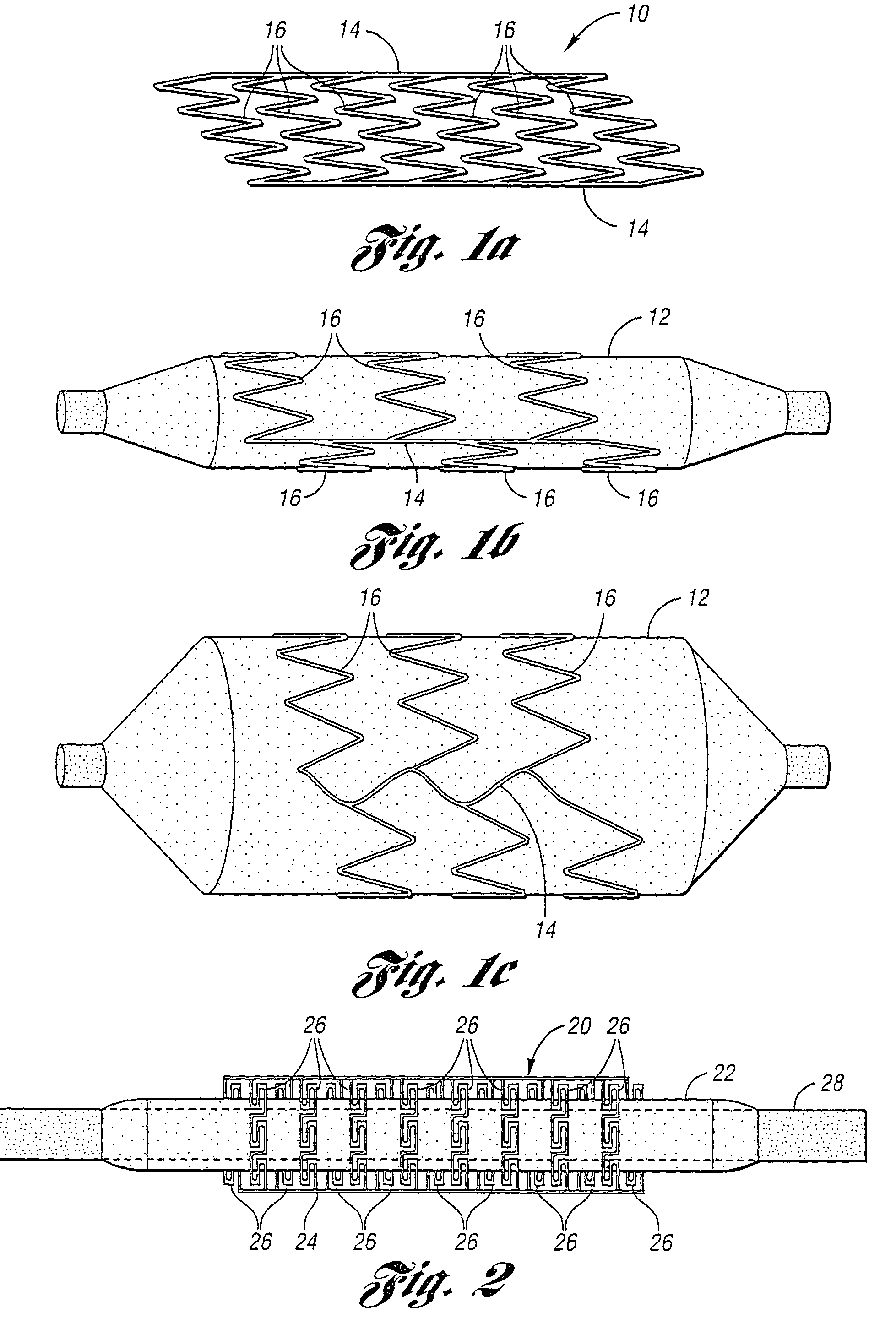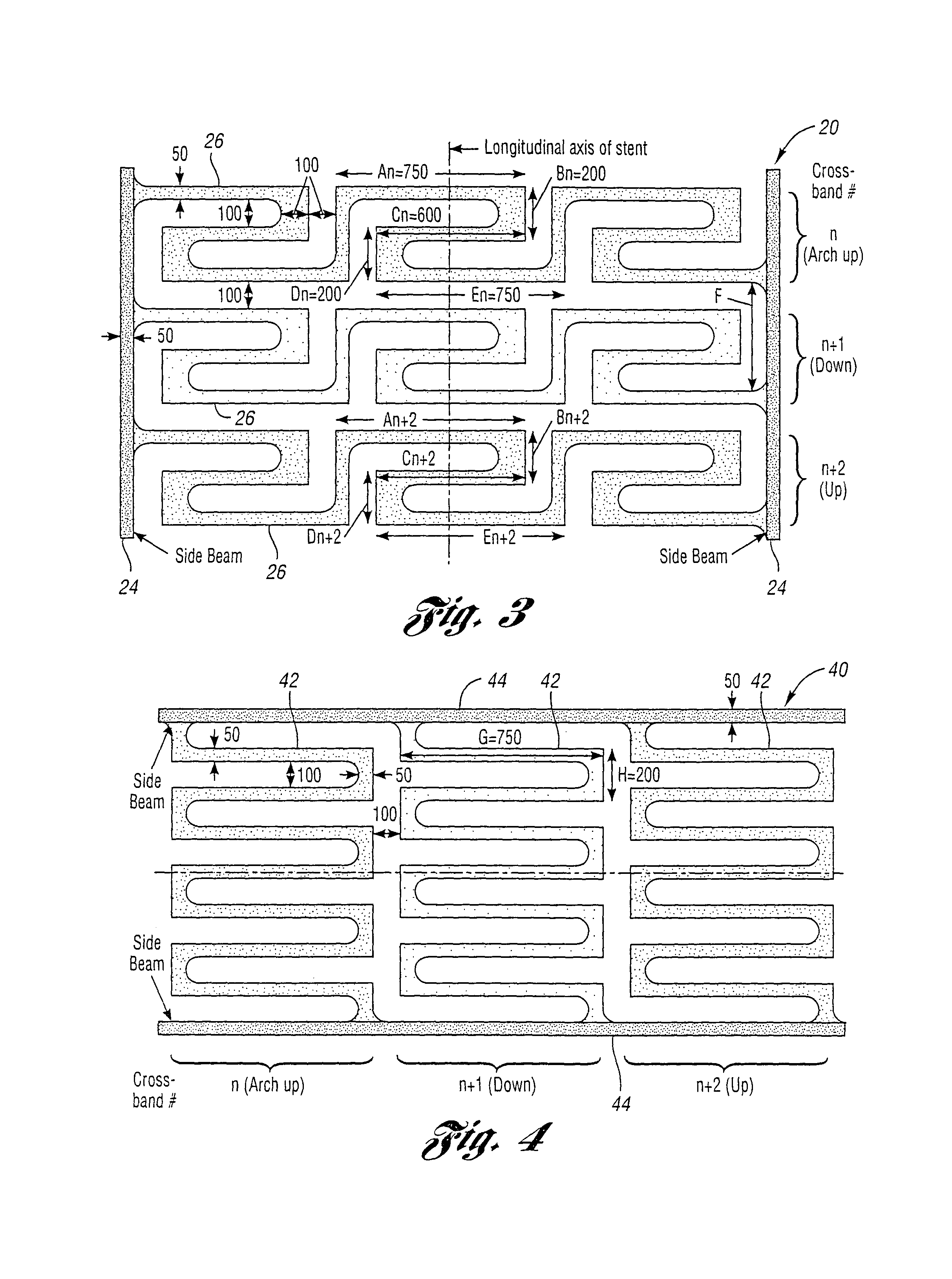Assembly and planar structure for use therein which is expandable into a 3-D structure such as a stent and device for making the planar structure
a technology of planar structure and assembly, which is applied in the direction of prosthesis, blood vessels, transportation and packaging, etc., can solve the problems of preventing the use of substantial resources available for fabricating planar microstructures, circuits often suffer from even lower throughput than laser machining, and achieve the effect of convenient manufacturing
- Summary
- Abstract
- Description
- Claims
- Application Information
AI Technical Summary
Benefits of technology
Problems solved by technology
Method used
Image
Examples
Embodiment Construction
[0079]A new assembly and planar structure for use therein which is expandable into a 3-D structure such as a stent and device for making the planar structure are disclosed herein. Also, this invention presents a new approach to the design and manufacture of coronary artery stents, which permits the use of planar batch fabrication techniques using microelectrodischarge machining. The devices are compatible with standard stenting tools and procedures. The wall patterns were designed so that both stress relief and the mechanical strength are simultaneously achieved in the expansion.
[0080]Referring to FIGS. 1a-1c, a generalized schematic view of a stent or planar structure constructed in accordance with the present invention is generally indicated at 10. The stent 10 is mounted on a deflated balloon 12 in FIG. 1b and on the balloon 12 when inflated in FIG. 1c. The stent 10 includes involute bands 16 tied between a pair of side beams 14. Measurements demonstrate that the designs have the...
PUM
| Property | Measurement | Unit |
|---|---|---|
| diameter | aaaaa | aaaaa |
| pressure | aaaaa | aaaaa |
| shrinkage | aaaaa | aaaaa |
Abstract
Description
Claims
Application Information
 Login to View More
Login to View More - R&D
- Intellectual Property
- Life Sciences
- Materials
- Tech Scout
- Unparalleled Data Quality
- Higher Quality Content
- 60% Fewer Hallucinations
Browse by: Latest US Patents, China's latest patents, Technical Efficacy Thesaurus, Application Domain, Technology Topic, Popular Technical Reports.
© 2025 PatSnap. All rights reserved.Legal|Privacy policy|Modern Slavery Act Transparency Statement|Sitemap|About US| Contact US: help@patsnap.com



